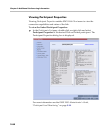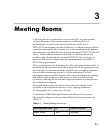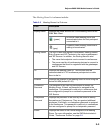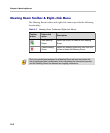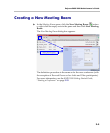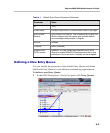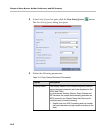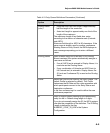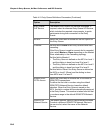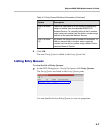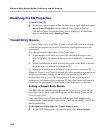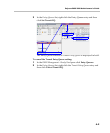
Chapter 4-Entry Queues, Ad Hoc Conferences and SIP Factories
4-2
Different Entry Queues can be created to accommodate different
conferencing parameters (by assigning different Profiles) and prompts in
different languages (by assigning different Entry Queue IVR Services). For
more information, see "IVR Services” on page 13-1.
The Entry Queue can also be used for Ad Hoc conferencing. If the Ad Hoc
option is enabled for the Entry Queue, when the participant enters the
target conference ID the system checks whether a conference with that ID
is already running on the MCU. If not, the system automatically creates a
new ongoing conference with that ID. For more information about Ad
Hoc conferencing, see "Ad Hoc Conferencing” on page 4-10.
An Entry Queue can be designated as Transit Entry Queue to which calls
with dial
strings containing incomplete or incorrect conference routing
information are transferred.
For more information, see "Transit Entry
Queue” on page 4-8.
To enable ISDN/PSTN participants to dial in to the Entry Queue, an
ISDN/PSTN dial-in number must be assigned to the Entry Queue. Up to
two dial-in numbers can be assigned to each Entry Queue. The dial-in
numbers must be allocated from the dial-in number range defined in the
ISDN/PSTN Network Service. You can allocate the two dial-in numbers
from the same ISDN/PSTN Network Service or from two different ISDN/
PSTN Network Services. The dial-in number must be communicated to
the ISDN or PSTN dial-in participants.
The Entry Queue can also be used as part of the Gateway to Polycom®
Distributed Media Application™ (DMA™) 7000 solution for connecting
Audio only PSTN, ISDN, SIP and H.323 endpoints to DMA™ 7000.
For more information, see Appendix H, “Gateway to Polycom®
DMA™ 7000”.
Default Entry Queue properties
The system is shipped with a default Entry Queue whose properties are:
Table 4-1 Default Entry Queue Properties
Parameter Value
Display Name DefaultEQ
The user can change the name if required.
Routing Name DefaultEQ
The default Routing Name cannot be changed.



